Redlining in paint: In new exhibit, artist shows effects of discrimination on her Yonkers neighborhood
Last summer, Shanequa Benitez borrowed her mom’s electric bike and pedaled up and down Yonkers’ notorious hills. Using her grandfather’s Vivitar 35-millimeter camera, the 34-year-old Yonkers native photographed friends on sweltering afternoons in and around Cromwell Towers, the public housing where she grew up in the Locust Hill neighborhood.
In one black-and-white photo, Pauly plays dice. Benitez has baby pictures with him. Three color photos show her friends Pops and Pun on a stoop, both smiling, donning matching white tank-tops.
In her exhibit, “But It’s Ours: The Redline Between Poverty and Wealth,” Benitez aims to highlight how Black and brown communities were confined to sections of Yonkers through the century-old discriminatory practice of redlining. As the first artist-in-residence for the nonprofit Yonkers Arts and the Municipal Housing Authority for the City of Yonkers (MHACY), Benitez has chronicled the effects of redlining on communities like hers through art.
Trapped:Yonkers residents seek refuge from dangerous urban heat islands
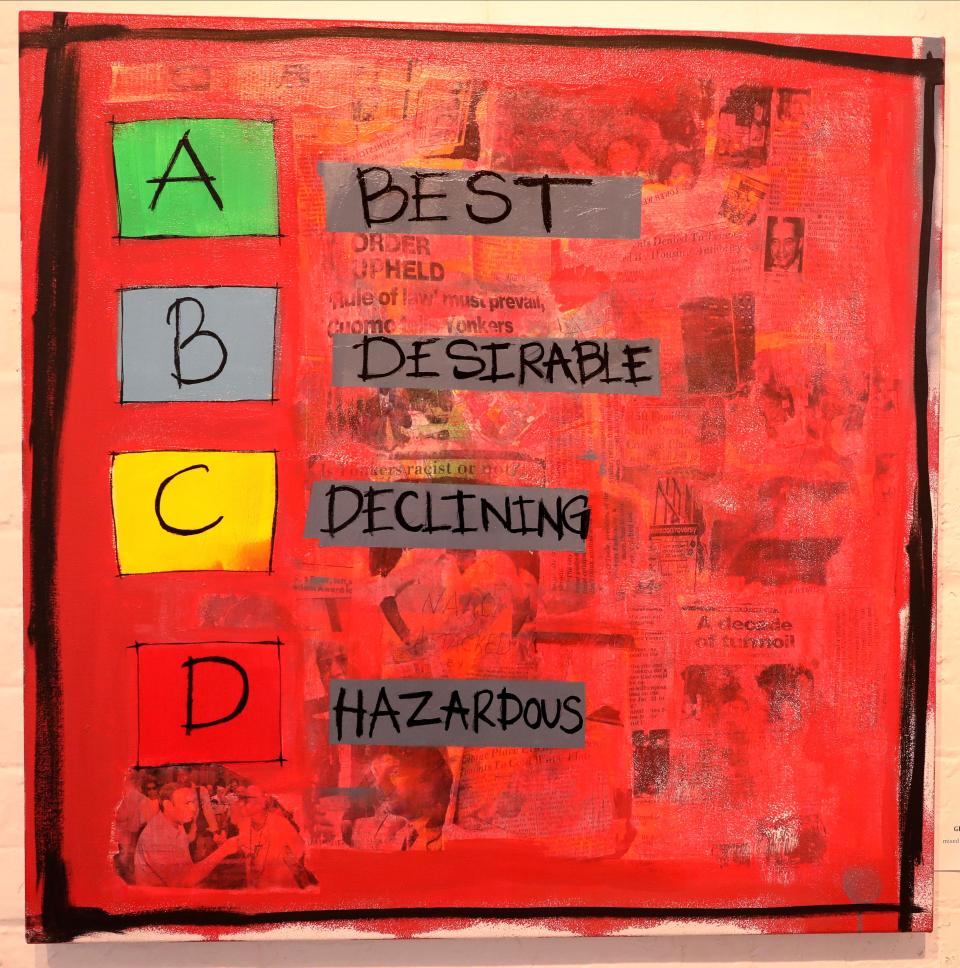
“These are people from my community,” said Benitez — who wore gray joggers and a gray sweater covered in paint, a Black cap that read “Self Love,” and off-white Reebok sneakers — at her gallery on a recent Friday. “But these are also redlined areas.”
Through mixed media done in the past year-and-a-half, Benitez set out to capture how the vestiges of these racist practices, first used nearly a century ago to discourage loans and investments in "risky" neighborhoods, manifest in her neighborhood today. This can mean bodegas as a community’s sole food source, as one painting shows. Another shows how once-redlined neighborhoods now experience gentrification, with new development pricing residents out.
The exhibit, opened in February, is being shown inside a converted gallery space at YOHO Studios, 216 Lake Ave., until April.
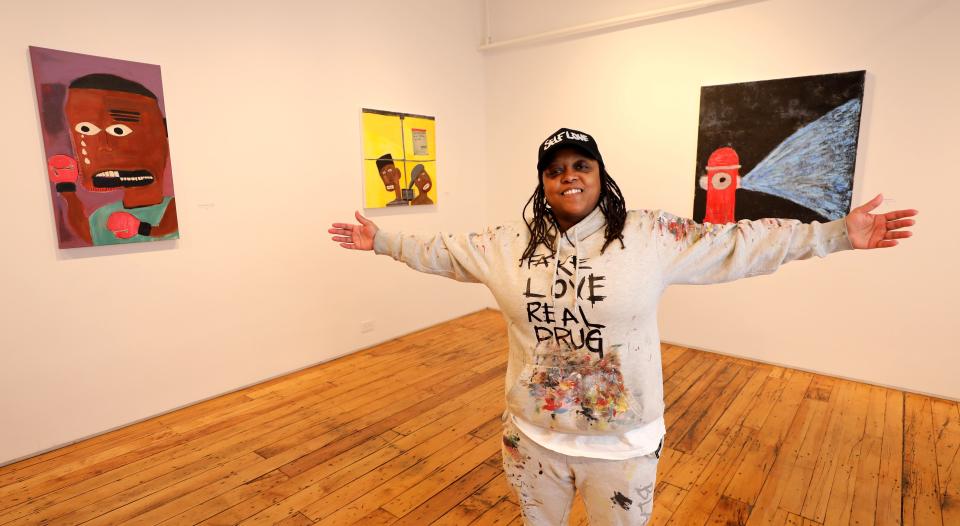
Redlining maps tell the story
As part of the exhibit, Benitez listed the old Home Owners’ Loan Corporation (HOLC) grading system used to redline neighborhoods, which was deemed illegal more than 50 years ago. Planners used color-coded maps for cities across the country to identify areas considered safe for investments and loans — and those that weren't safe. The system built on existing trends that segregated communities of color, immigrants and low-income people.
Benitez’s Locust Hill neighborhood was cut in the lowest grades, between yellow “C" areas, considered "Declining," and red “D” areas for “Hazardous,” HOLC records of lower Westchester County from the 1930s show. Records show the red area had aging buildings and faced "infiltrations" of Black people.
Meanwhile, the yellow area, where Benitez’s Cromwell Towers stand — built in 1974, after redlining officially ended — did not yet have Black people or immigrants. But HOLC surveyors were concerned about the trend to apartments, which could draw a more diverse mix of tenants.
Truth and memory:Suburb uncovers hidden burial ground as NY studies centuries of African American history
“She just is Yonkers. She’s from one of the redlined areas in Yonkers,” Ray Wilcox, the executive director of Yonkers Arts, said of Benitez. “When you’re talking about this particular issue or topic, why not really focus on someone who’s kind of lived through it?”
Artists have long sought to capture the effects of redlining. For example, Lorraine Hansberry’s 1959 play, “A Raisin in the Sun,” showed the effects of housing discrimination for a Black family on the South Side of Chicago as they seek to buy a home.
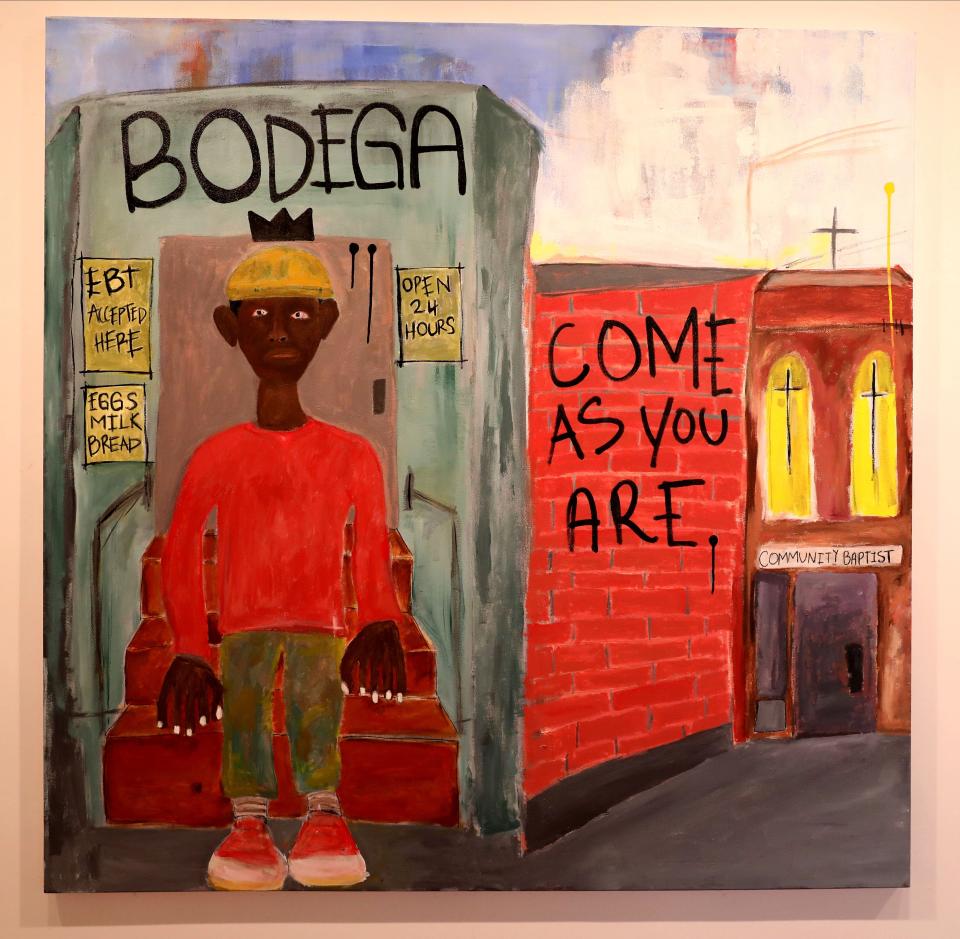
“Undesign the Redline,” an interactive exhibit developed by New York City-based company Designing the WE, highlighted redlining’s effects on communities of color, like co-creator April De Simone’s Tremont neighborhood in the Bronx. Simone's mother couldn’t get a mortgage for a home, she said. Simone grew up seeing blighted buildings catch fire, and drug epidemics.
The exhibit has been shown in more than two dozen cities, tailored to those where redlining had lasting effects. It shows the effects of redlining and envisions a future beyond the old maps, added De Simone. She has since founded the Practice of Democracy, an exhibit that seeks to highlight democracy in everyday life.
“These are installations that are really important about telling the story,” De Simone said. “And again, doing it from a therapeutic and healing perspective. And ensuring that we archive this.”
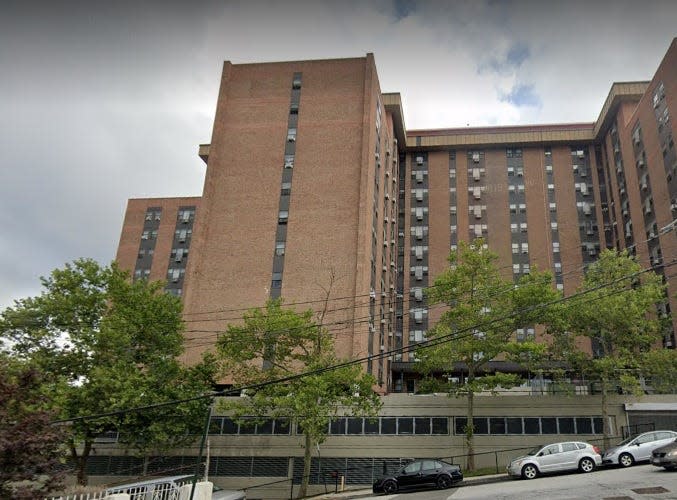
'Natural progression' into painting
Benitez’s father did graffiti, under the tag Antlarock, on New York City subways. She entered art with poetry and photography, then painted clothes before turning to the canvas.
Already diagnosed young with asthma — which residents in Yonkers’ formerly redlined neighborhoods experience at higher rates — Benitez contracted IGg4, an immune-mediated disease, in 2014 that made painting difficult. She started visiting galleries and museums.
While she still has IGg4, she recovered and drew further inspiration to paint. She cited influences from prominent Black artists such as Jean-Michel Basquiat and Romare Bearden, but also Faith Ringgold, a Harlemite famous for quilts.
Paintings primarily fill Benitez’s exhibit, and they seek to describe her neighborhood. Some of the issues she addresses in her current exhibit are also seen in “The House I Live In,” an award-winning PBS documentary about the War on Drugs and its effects on Black communities. Filmed more than a decade ago, Benitez is heavily featured in the film as she navigates Locust Hill.
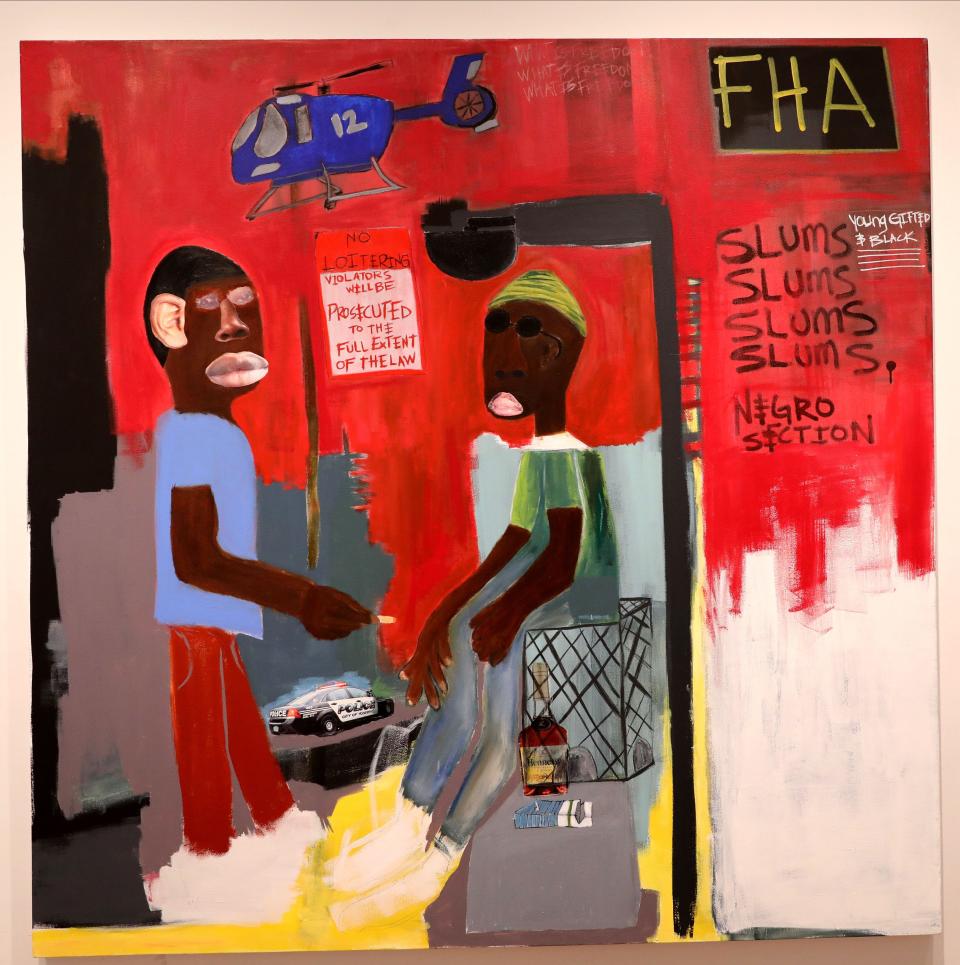
Benitez’s painting “Under Surveillance” shows Yonkers police and local news hovering over two Black people, under a no loitering sign. Their feet are blank, not painted, Benitez explained, because they are stuck in their environment, complacent. Etched on the side, it reads “Slums” repeatedly, then “Negro Section.” “Young Gifted and Black” is underlined.
Benitez also has a mixed-media collage that chronicles Yonkers’ court battle to desegregate public housing, which ended in 2007, when Benitez was a teen. She went to the city library archives to find newspapers, pictures and excerpts from “Show Me a Hero,” journalist Lisa Belkin’s book about the case that was adapted into an HBO miniseries. A photograph of Benitez’s late uncle Clifford Cook, then an organizer speaking at a rally, is in the piece.
Throughout her work, she makes references to history, politics and pop culture. "Boyz n the Hood," the 1991 film set in Los Angeles; the New York Times’ 1619 Project; and Spike Lee’s “Do the Right Thing” are among her touchstones.
The exhibit’s namesake, “The Redline Between Poverty and Wealth,” comes from her piece of an NYPD squad car going past the Harlem intersection of 125th Street and Lexington Avenue. Benitez now lives in Harlem, after winning the housing lottery for an apartment, though she said she’d move back to Yonkers given the chance.
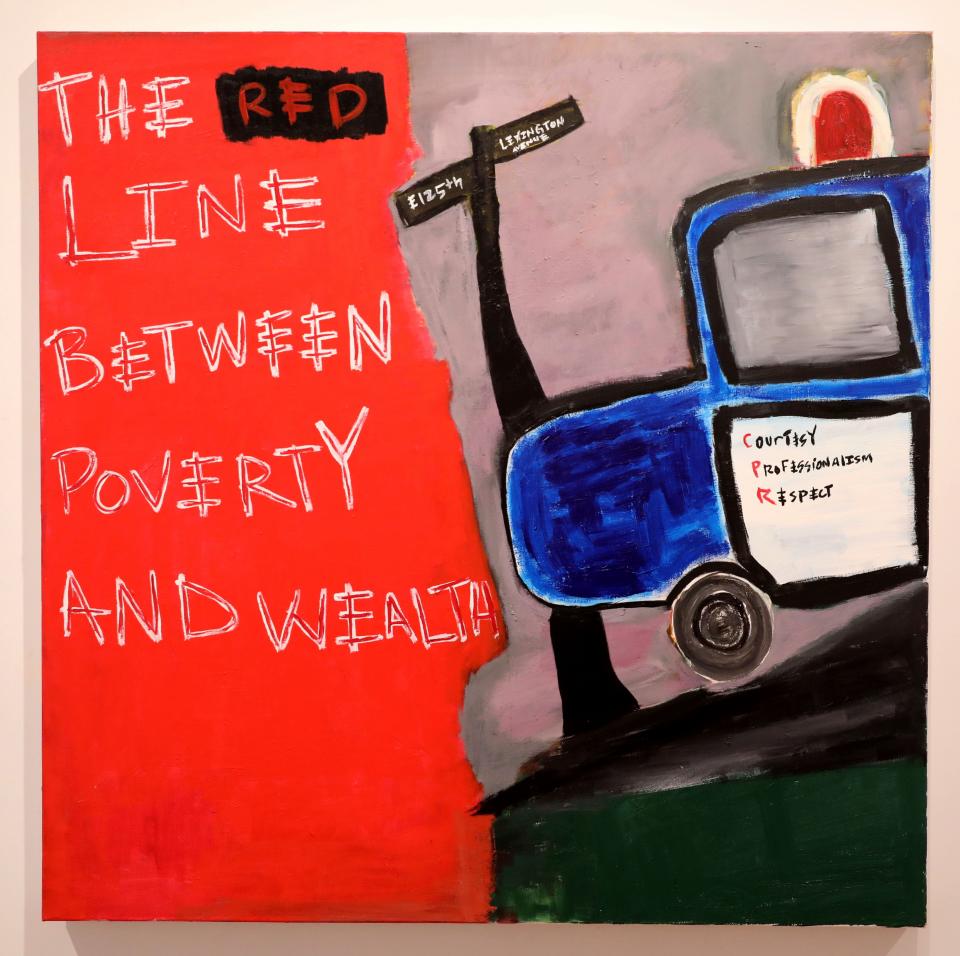
'It tells the whole story'
Eventually, Benitez’s work is set to be shown at Yonkers' public housing.
Wilson Kimball, the housing authority's executive director, said Benitez can uniquely speak to issues affecting Yonkers public housing residents. Benitez is also a member of the Climate Safe Task Force, composed of Yonkers residents and organized by the nonprofit Groundwork Hudson Valley, to address extreme heat and flooding in the city.
“It tells the whole story,” Kimball said. “It tells everything from the (desegregation case), to the heat island effect, to the redlining. It really tells all these stories that are coming to the fore.”
In late February, Benitez spoke alongside state Senate Majority Leader Andrea Stewart-Cousins, D-Yonkers, for a discussion, “Black Art as Resistance.” Benitez seeks to create what she calls “functional public art.”
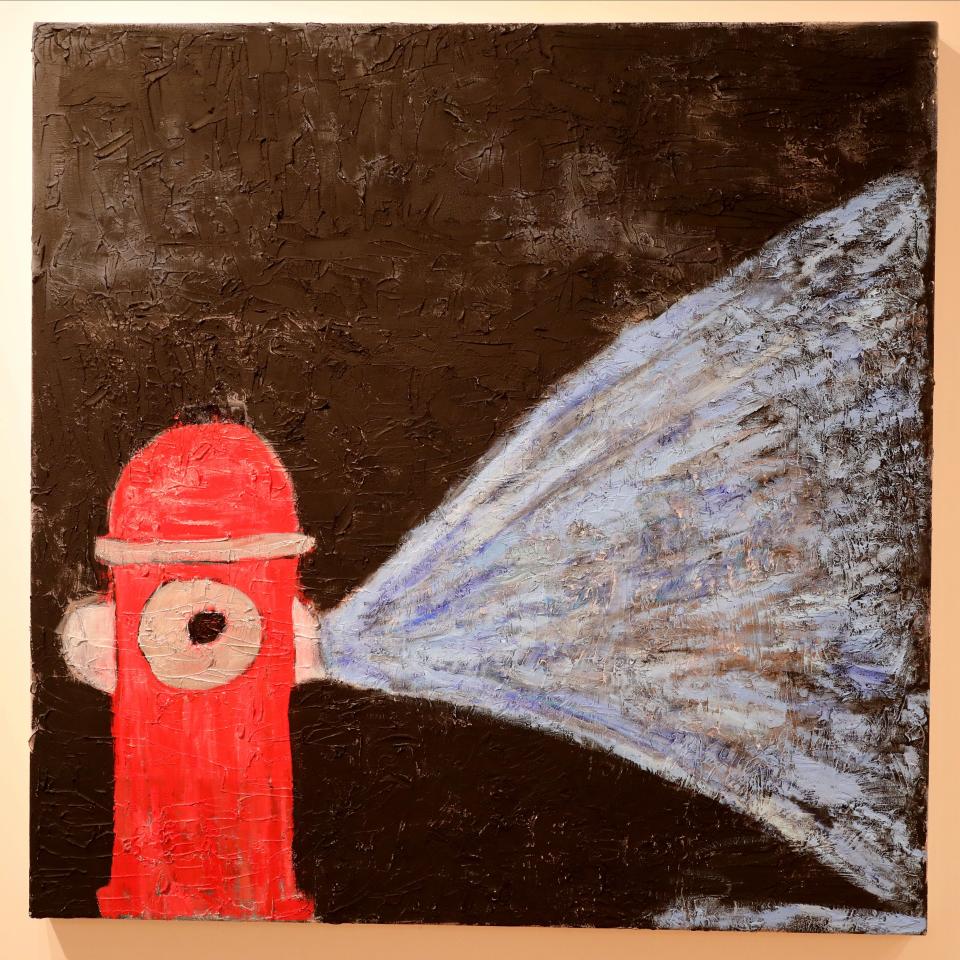
At the exhibit, Benitez has her trademark “Resilient Bear,” a cartoon akin to Mighty Mouse, except with pulsing red eyes, crooked teeth and boxing gloves. She hopes she can add physical art pieces like it to Yonkers parks to spray water in the summer in formerly redlined areas with little tree shade.
“I just want to bring this all over, starting here,” she said. “We can create these things that are functional, where they actually relieve heat during those seasons.”
Many kids in Yonkers neighborhoods resort to an iconic New York cooling technique in the summer: cracking open fire hydrants.
Benitez painted that, too. It’s textured with layers of paint. Water ripples out, then fades, over a matted black backdrop.
“But It’s Ours: The Redline Between Poverty and Wealth” is being shown at Yonkers Arts Project Space and Gallery, 216 Lake Ave. The hours are: Thursdays, 6-9 p.m., and Saturdays, 12-4 p.m. For more information, visit https://yonkersarts.org/current-exhibition/.
Eduardo Cuevas covers race and justice for the USA TODAY Network of New York. He can be reached at EMCuevas1@gannett.com and followed on Twitter @eduardomcuevas.
This article originally appeared on New York State Team: Exhibit by Yonkers artist shows effects of redlining on neighborhood

